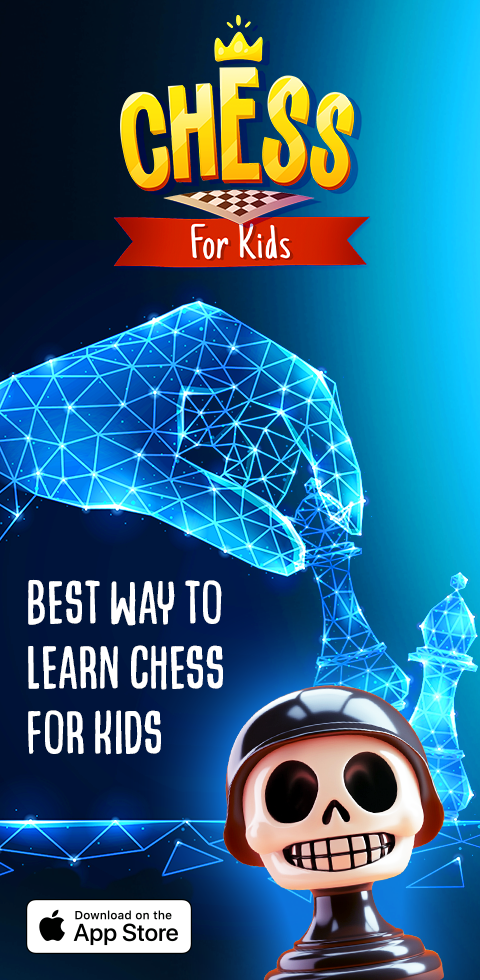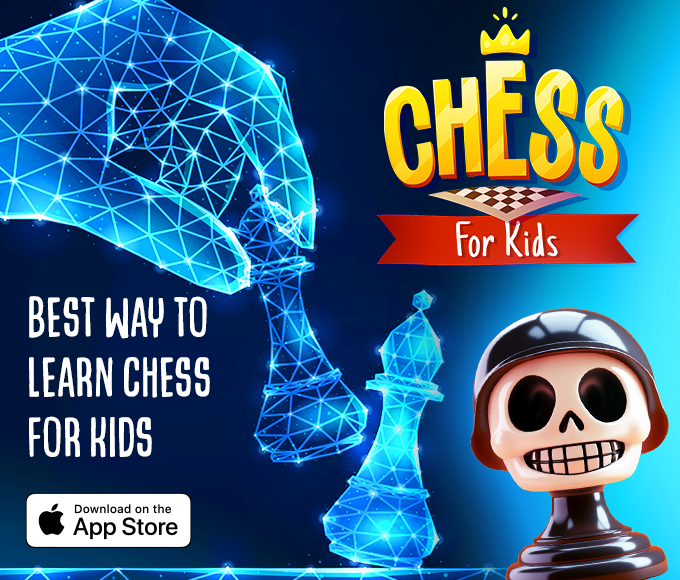The 5 Senses Worksheets for Ages 3-9
14 filtered results
-
From - To
Discover our engaging "5 Senses Worksheets for Ages 3-9" designed to enhance young learners' understanding of their world through interactive activities! These worksheets offer fun exercises that help children identify and explore each of the five senses—sight, hearing, taste, touch, and smell. Featuring vibrant illustrations and age-appropriate tasks, our resources aim to stimulate curiosity and promote sensory awareness in early education. Perfect for classrooms or home learning, these worksheets support cognitive development and encourage language skills through creative experiments and thought-provoking questions. Join us and inspire your child's exploration of the senses today!
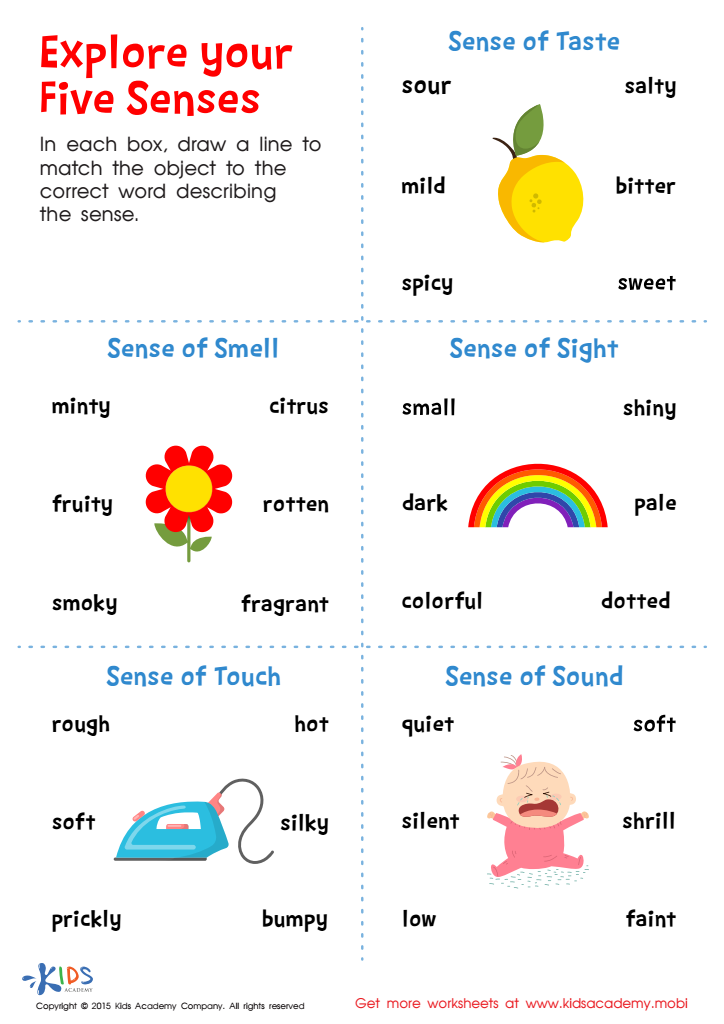

Explore Your Five Senses Printable


Matter: Assessment 1 Worksheet
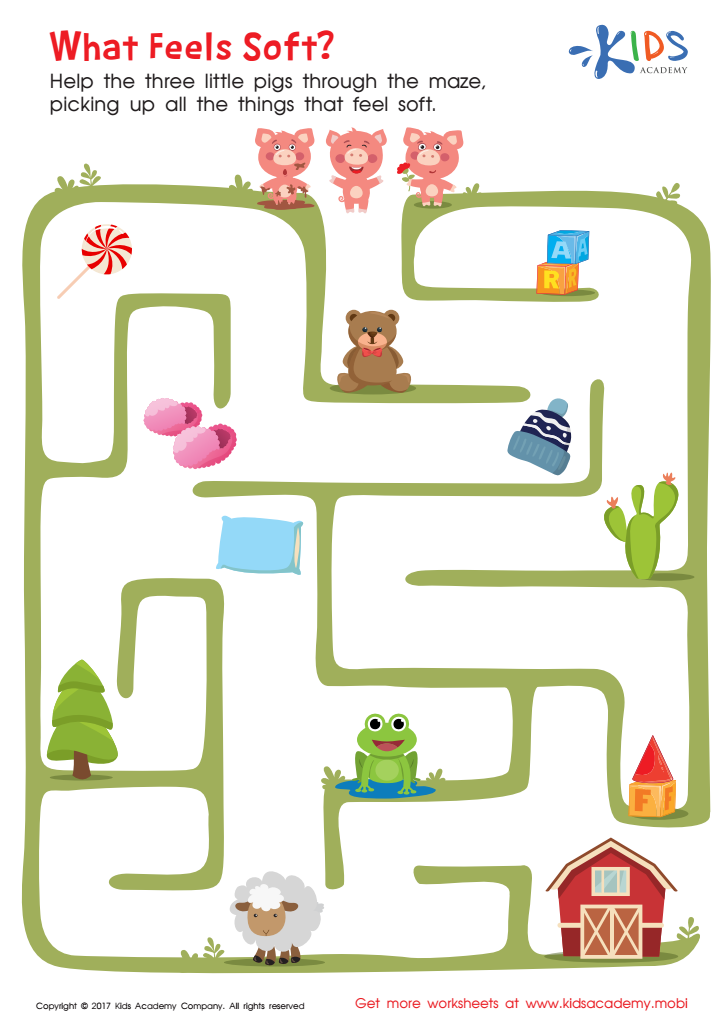

What Feels Soft Printable
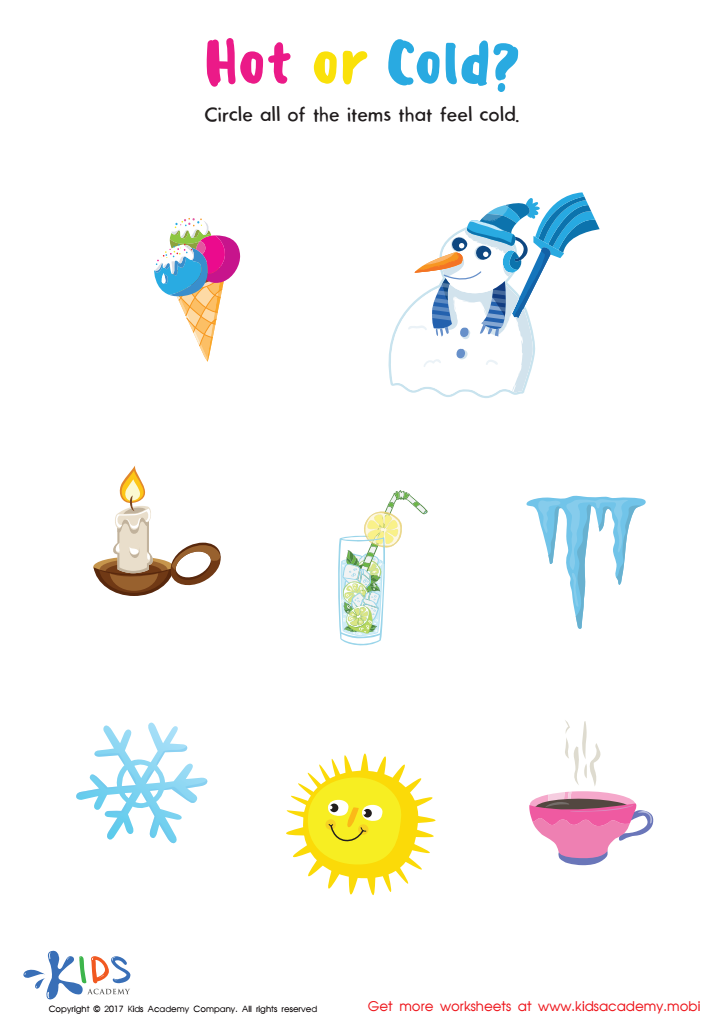

Hot or Cold Printable


Observing Properties Worksheet


Can You Hear Me Worksheet
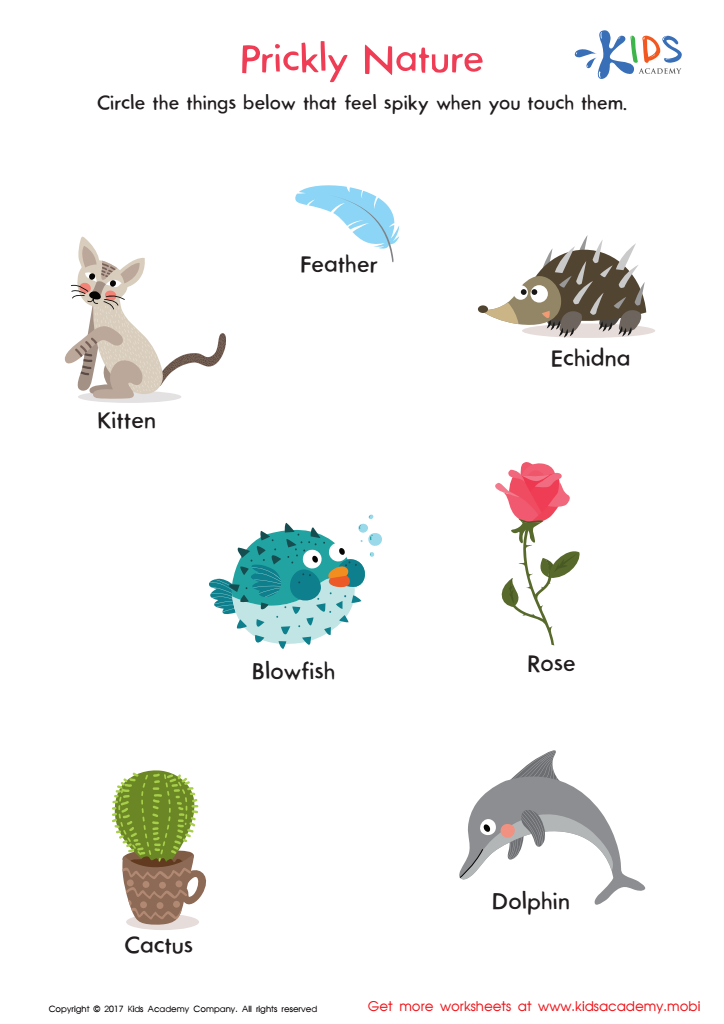

Prickly Nature Worksheet
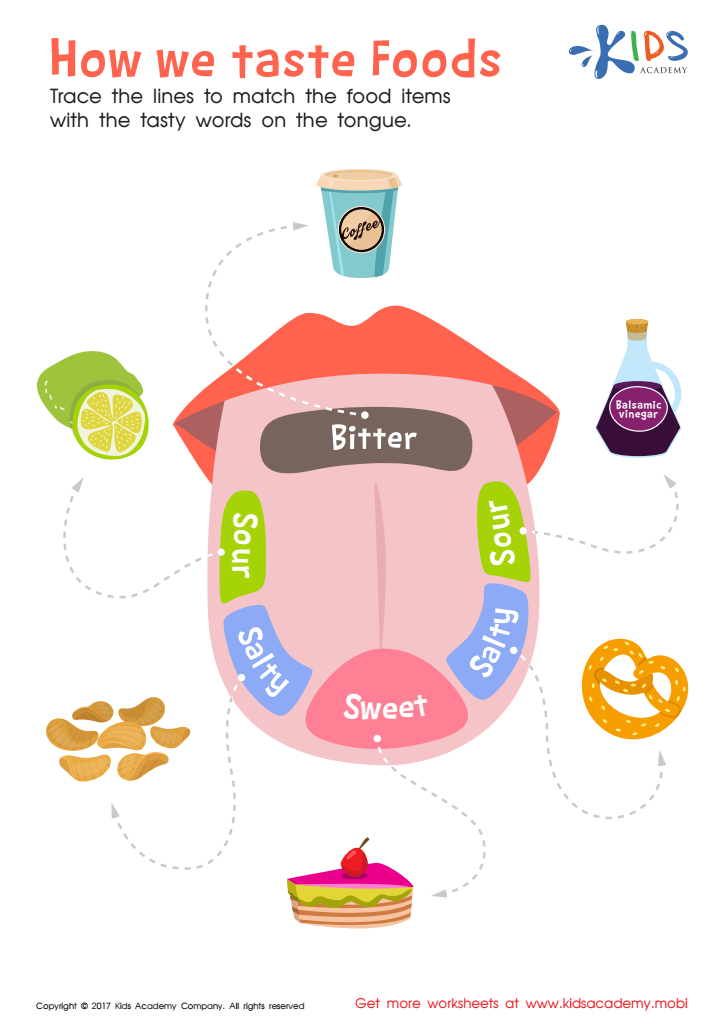

How We Taste Foods Worksheet
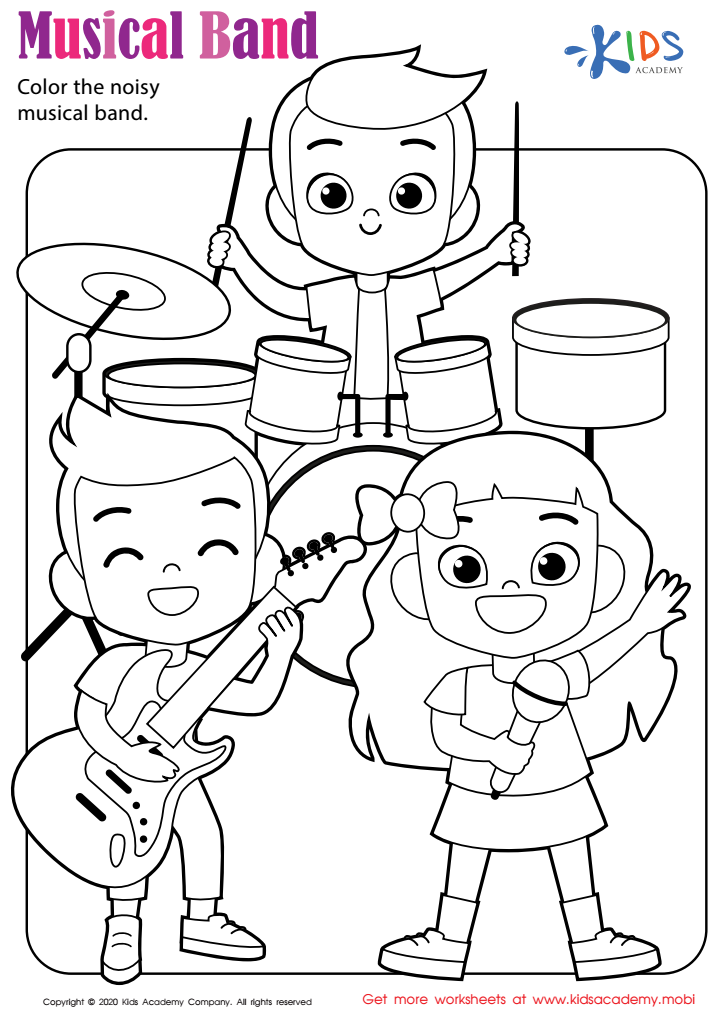

Musical Band Worksheet
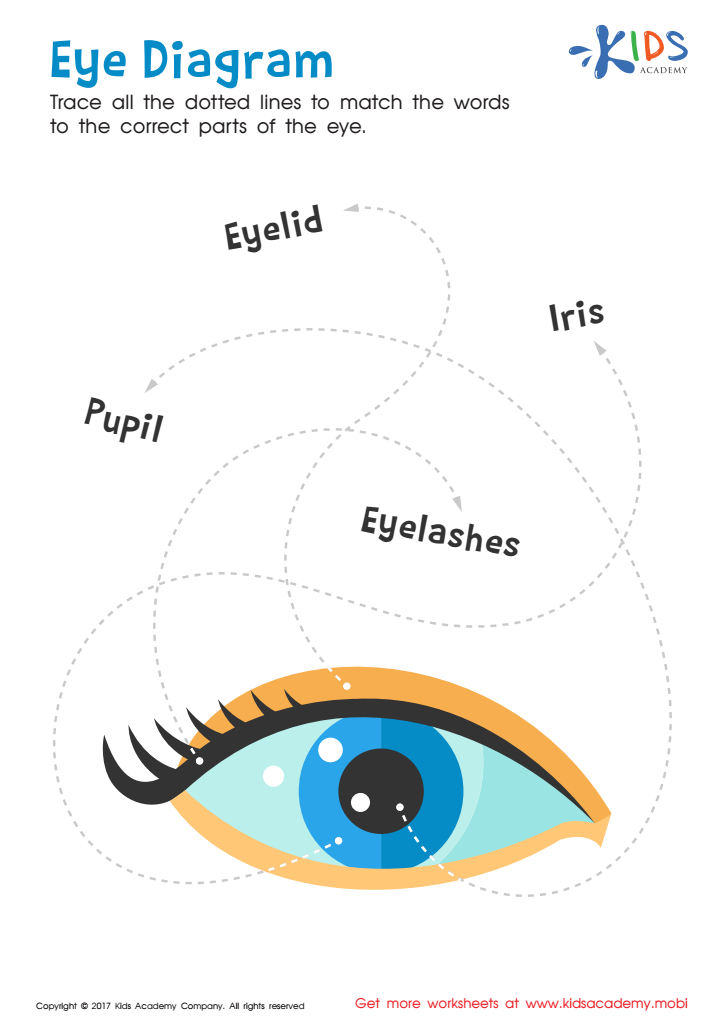

Eye Diagram Printable
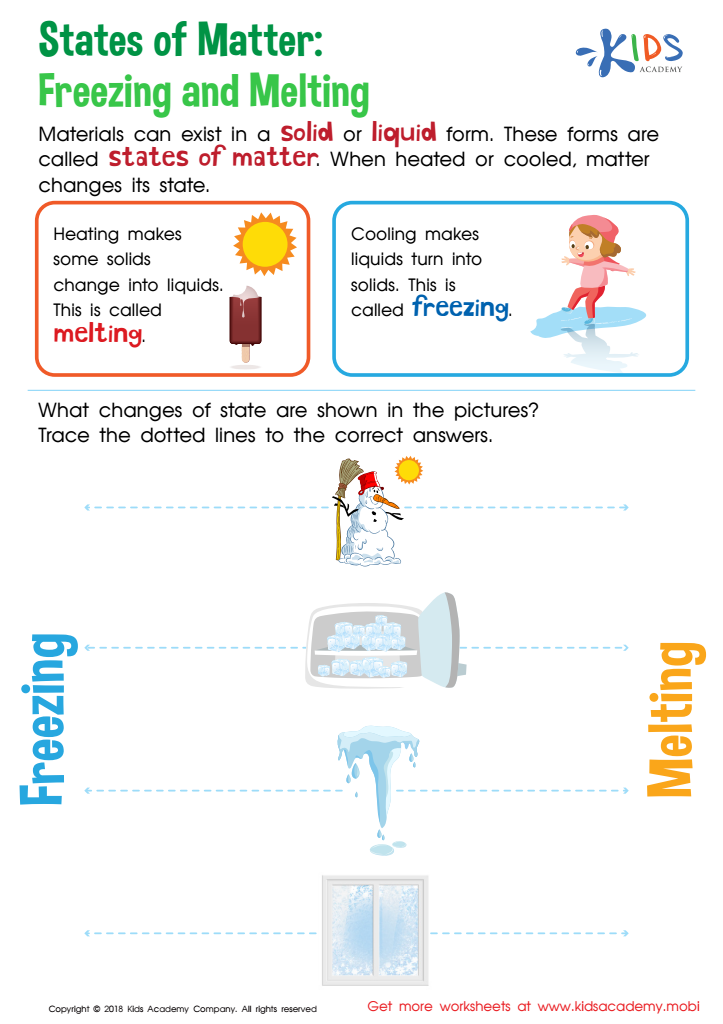

States of Matter: Freezing and Melting Worksheet
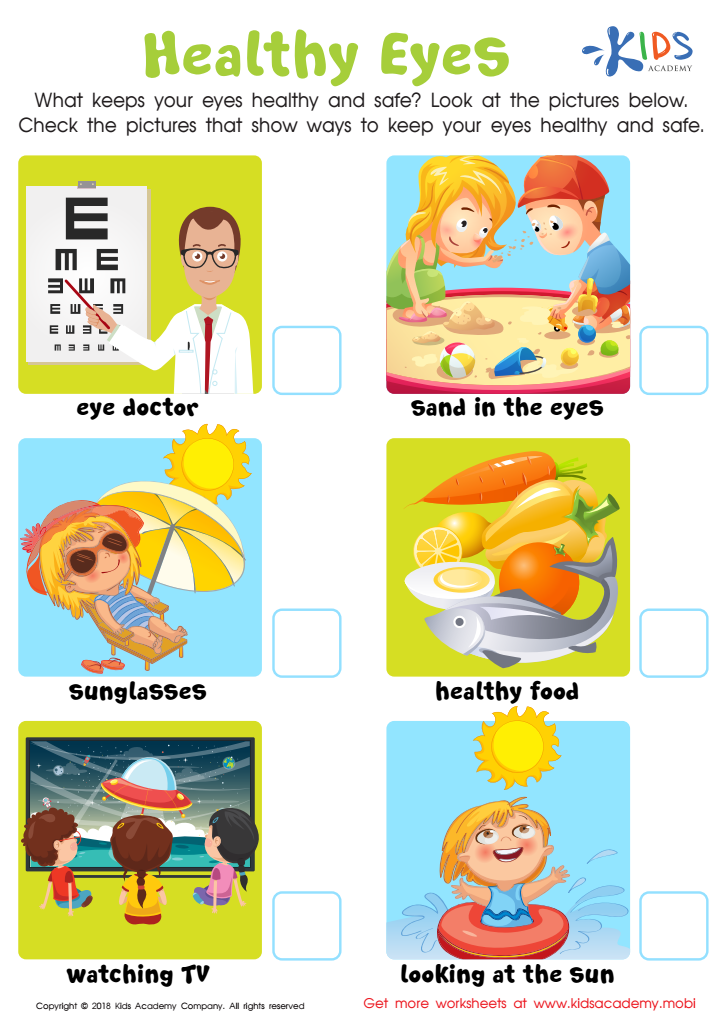

Healthy Eyes Worksheet
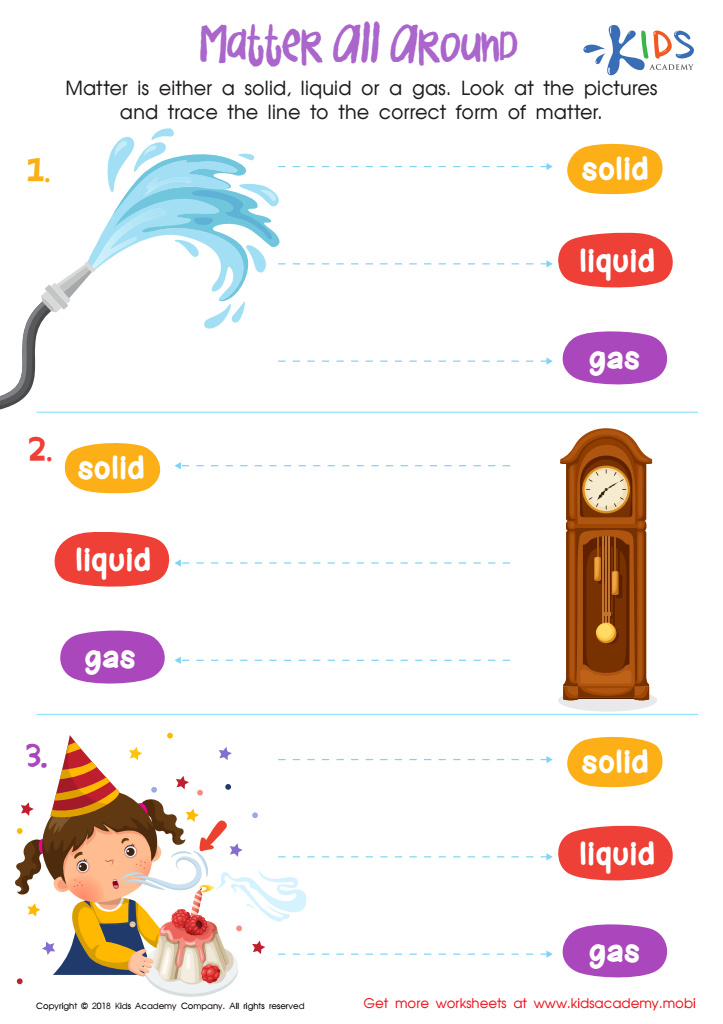

Matter all Around Worksheet
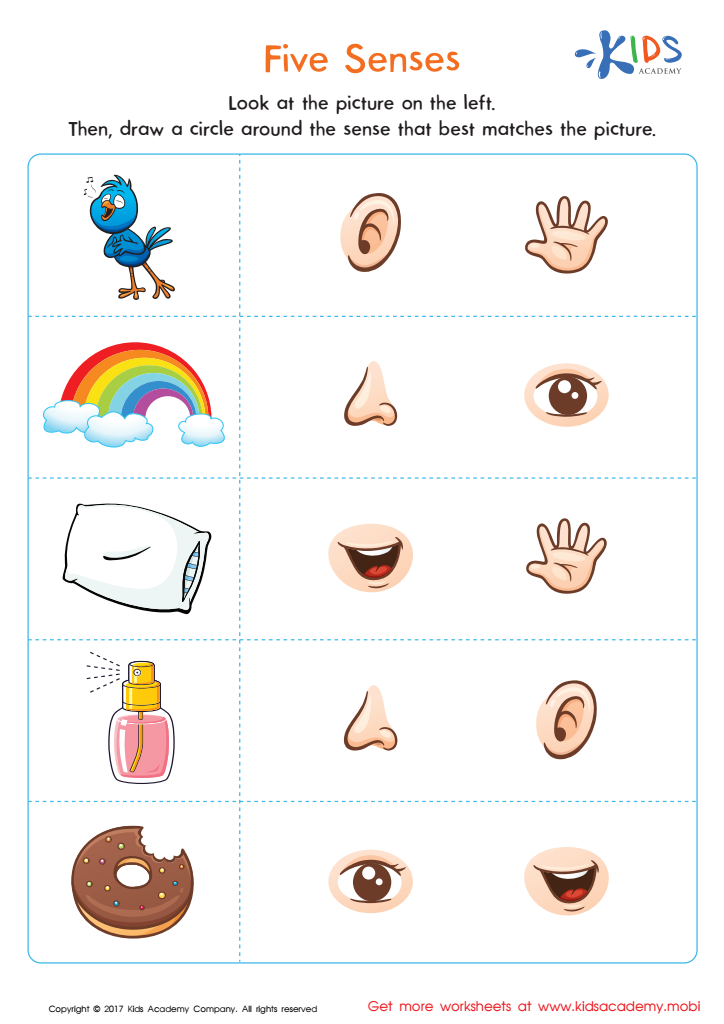

Five Senses Printable
Understanding the five senses—sight, hearing, touch, taste, and smell—is crucial for children aged 3-9, as it forms the foundation of their perception and interaction with the world. Parents and teachers should prioritize sensory education because it fosters cognitive development and helps children make connections between experiences and concepts.
For young learners, the five senses are not just academic subjects; they are essential tools for exploration and learning. Engaging with their senses enhances critical thinking and problem-solving skills, allowing kids to investigate their surroundings, notice details, and make observations. This engagement plays a key role in early science education and encourages curiosity—a vital ingredient for lifelong learning.
Furthermore, sensory experiences promote language development. As children describe what they see, hear, touch, taste, or smell, they expand their vocabulary and communication skills, fostering social interactions. Additionally, creating opportunities for sensory exploration can support emotional development, helping children to express their feelings and cope with new experiences.
In summary, a strong understanding of the five senses not only enriches children’s learning but also supports their holistic development—enhancing cognitive, social, and emotional skills that are essential for their growth and future success.
 Assign to My Students
Assign to My Students
